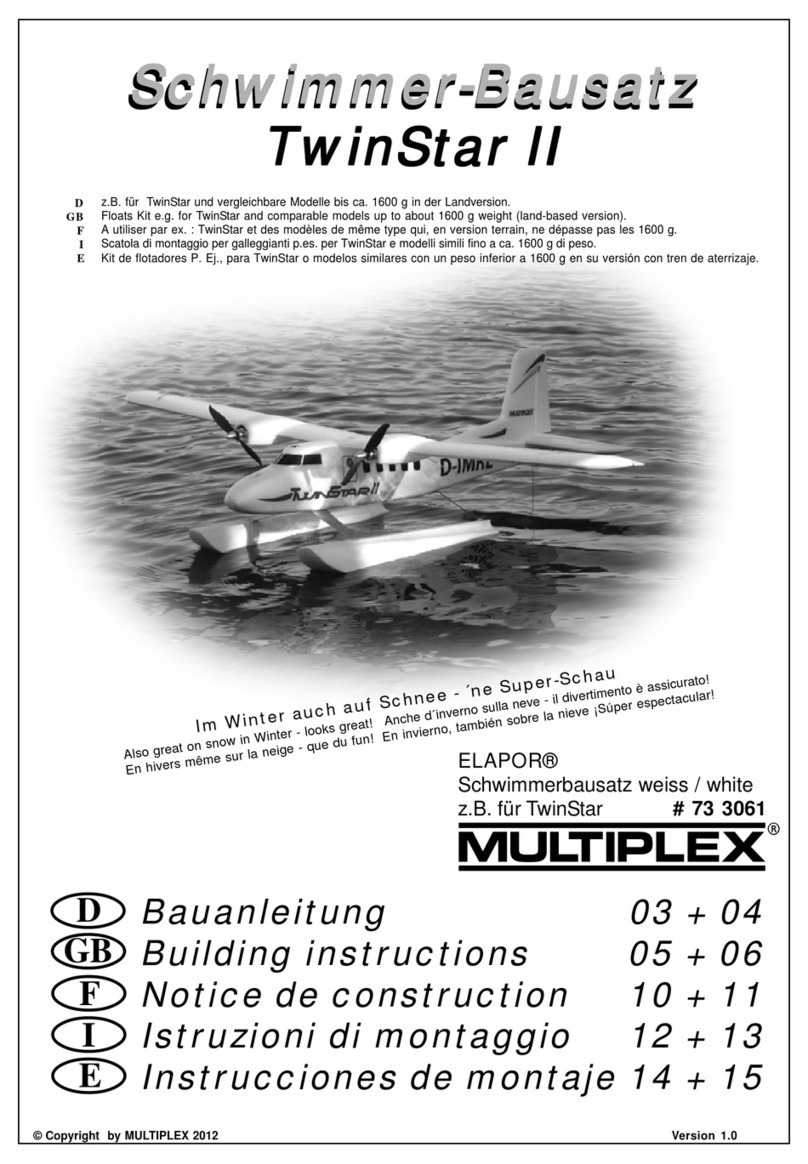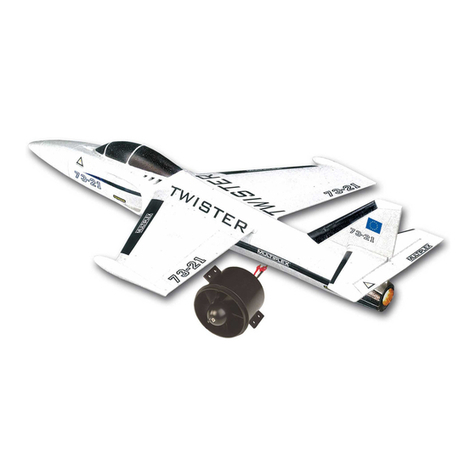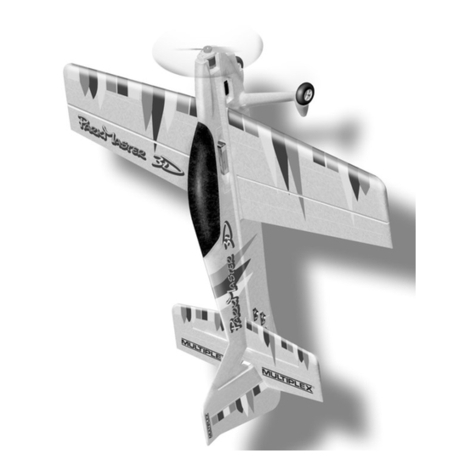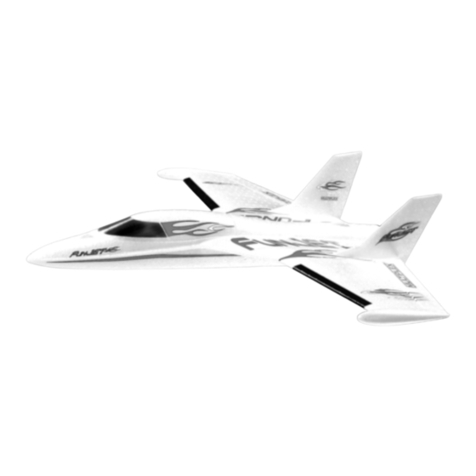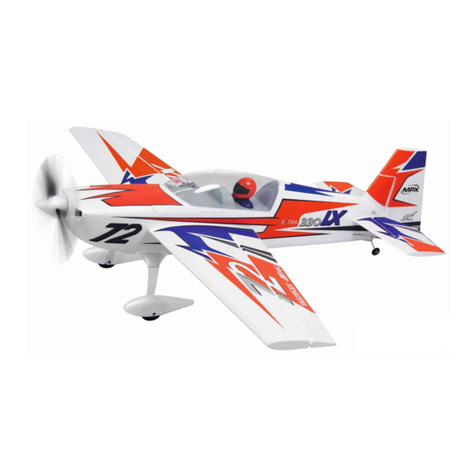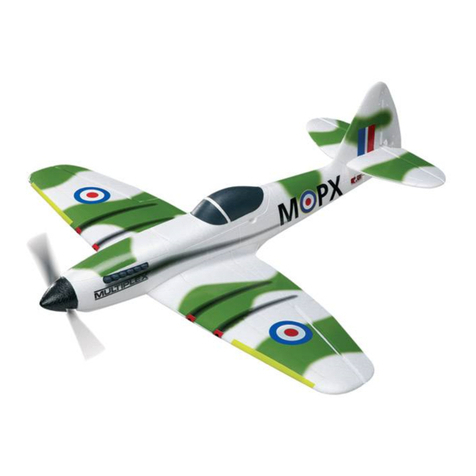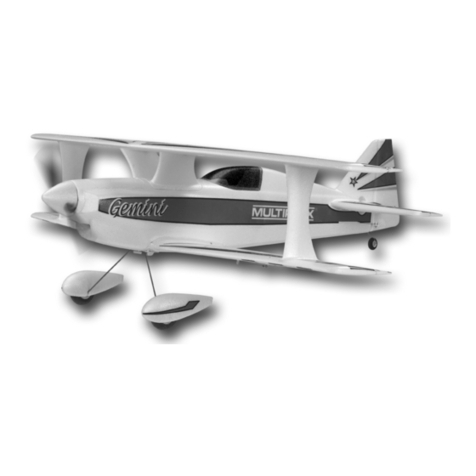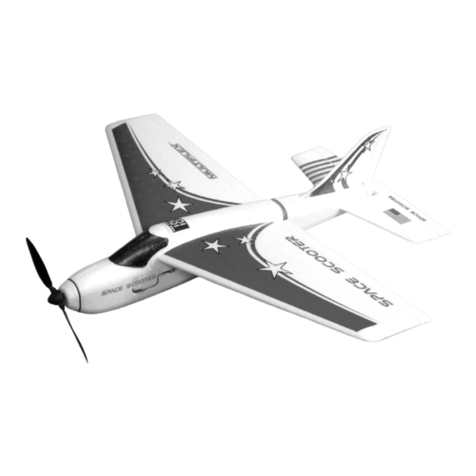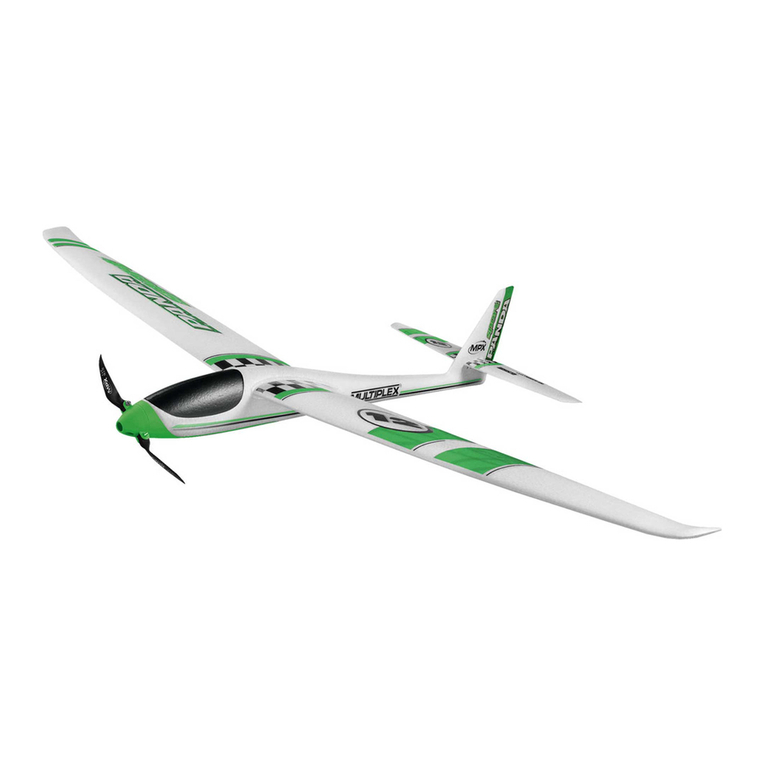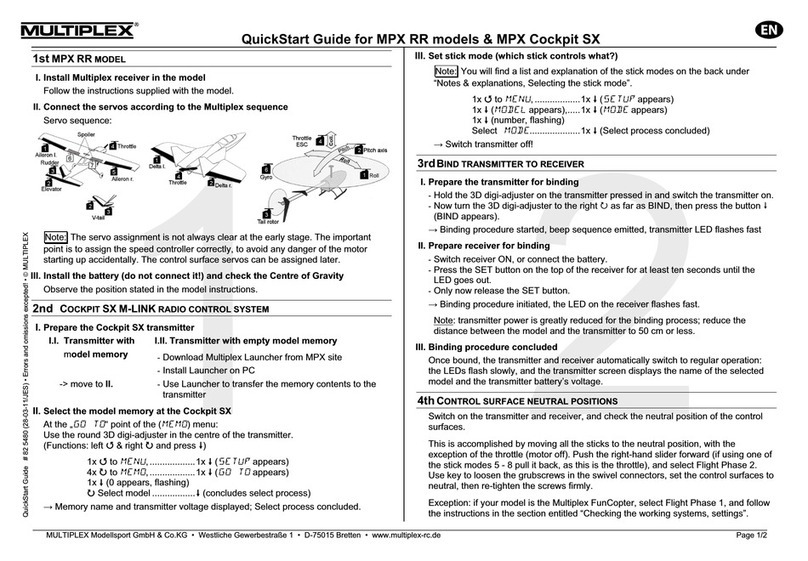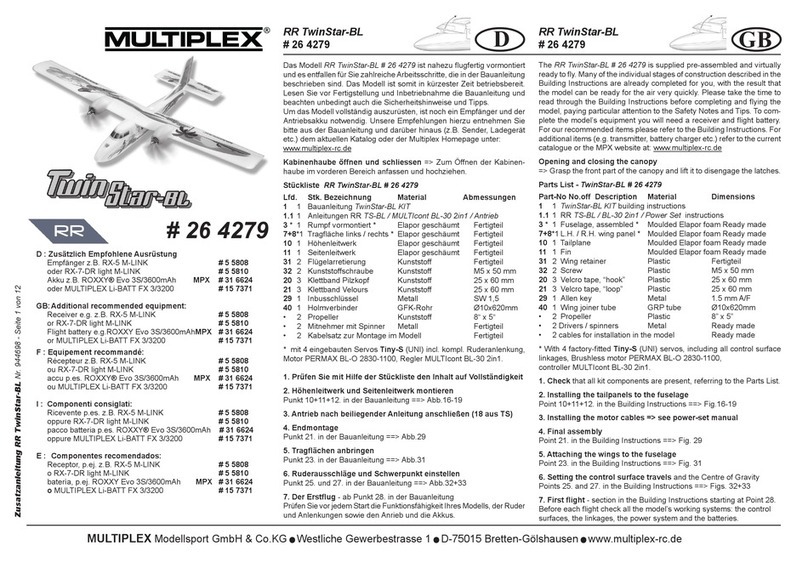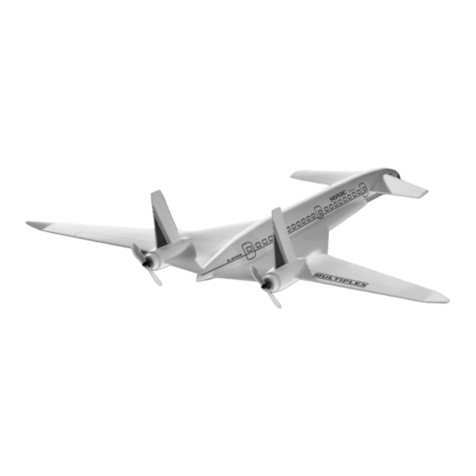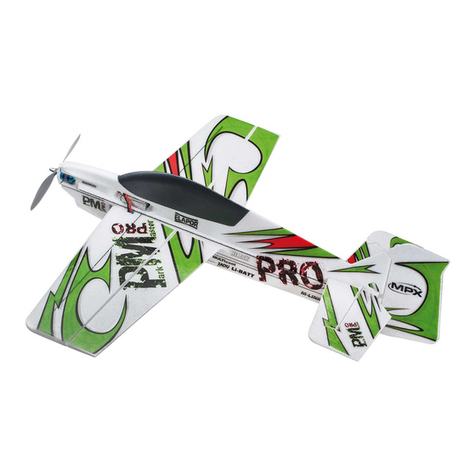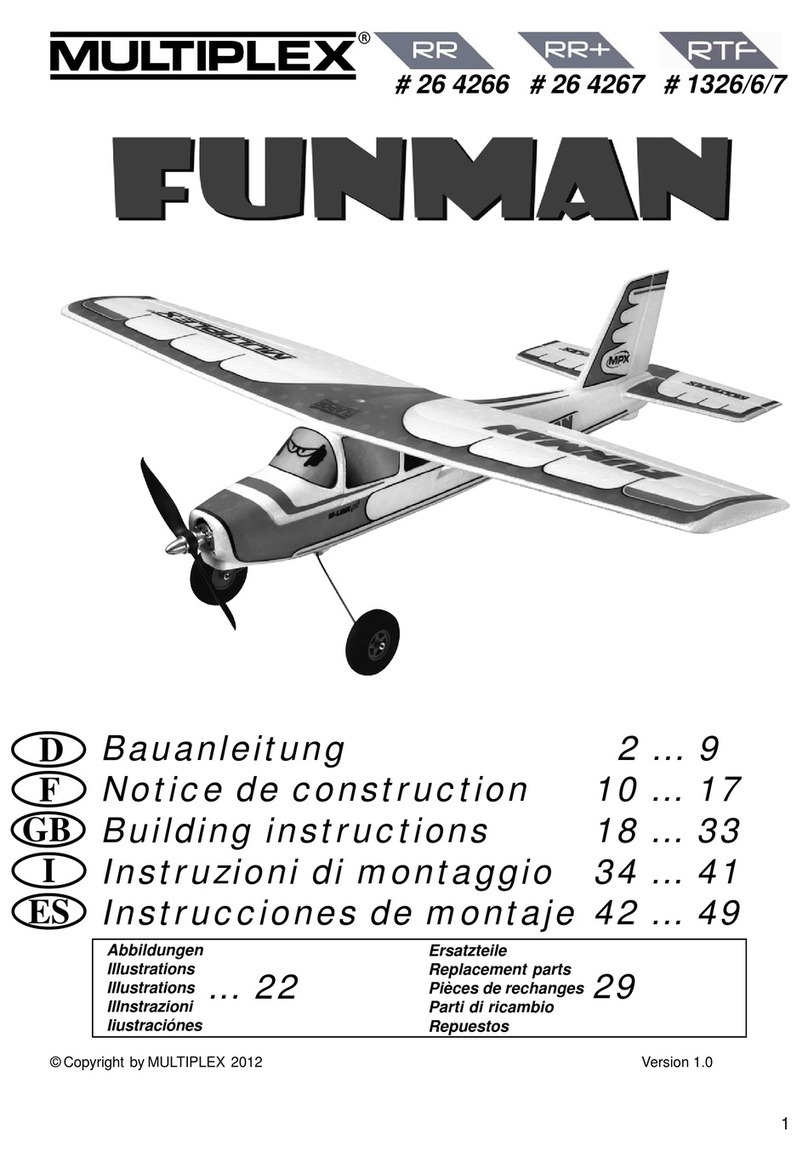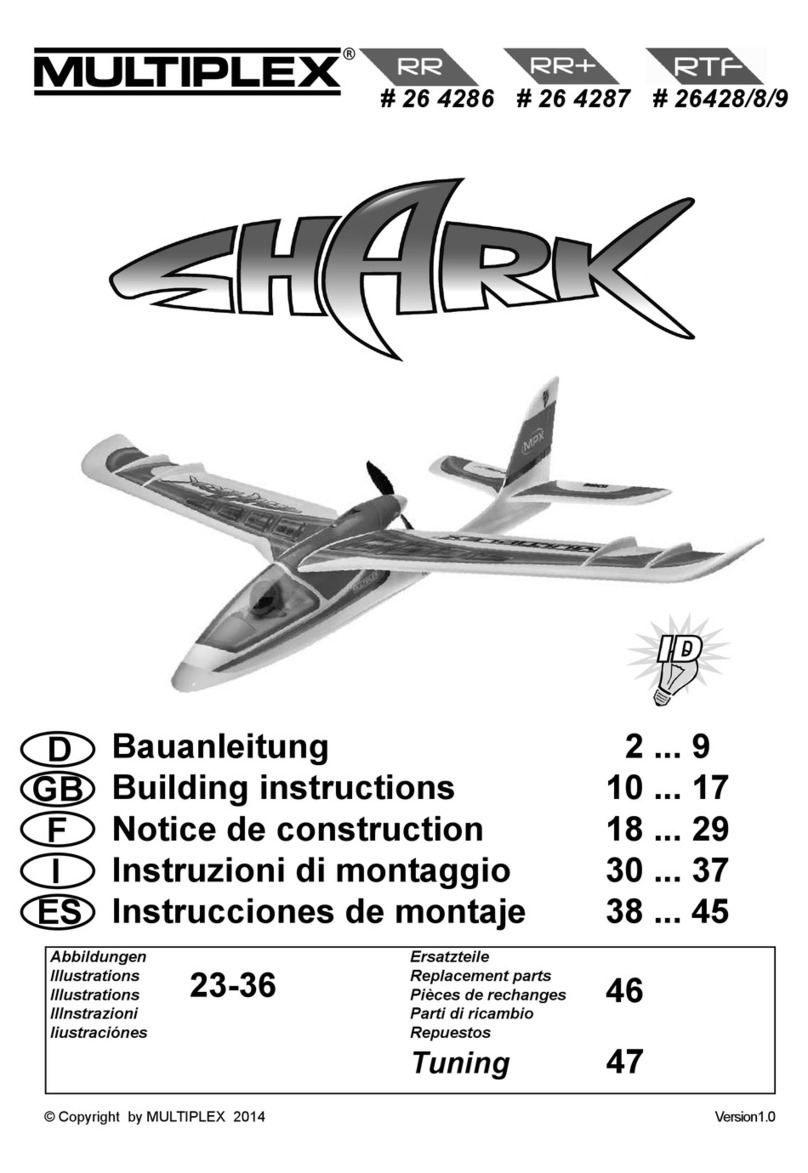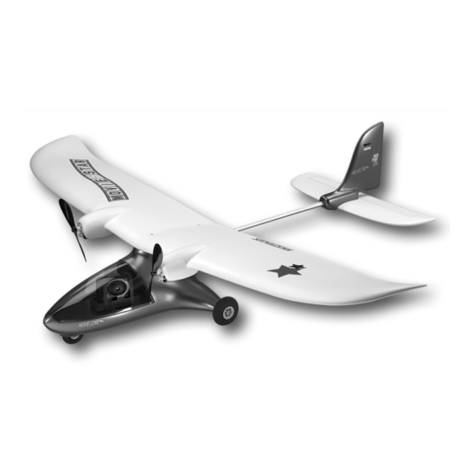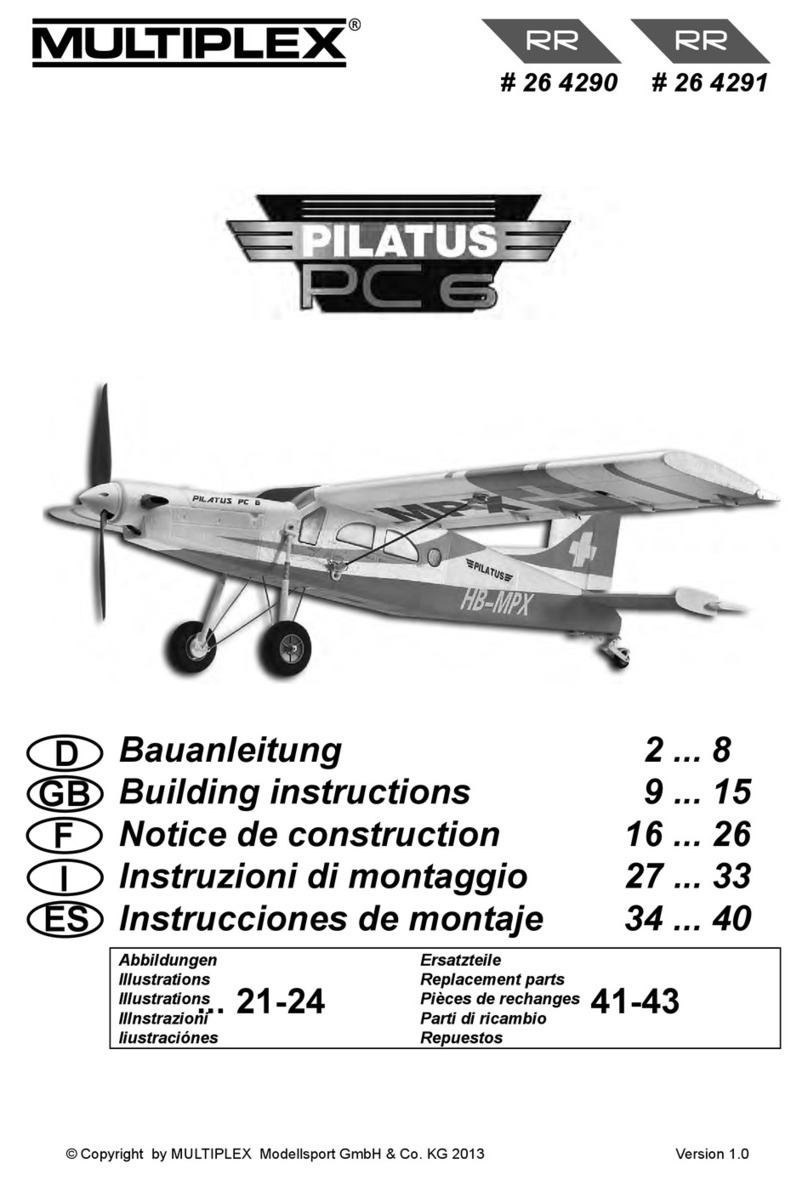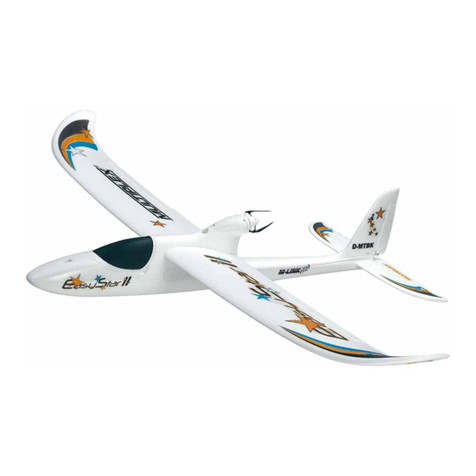
Randbogenleiste
46
entsprechend
ablängen,andieAufsteck-
flügelklebenund verschleifen.Randbogenfür den Flügel
ablängenund
Lage
der
MessingröhrchenimFlügelamRand-
bogen
markieren.Bohrungenunter
entsprechendem
Winkel
(vorne
Durchmesser3mm,hinten2mm)ca.
10mm
tiefanbrin-
gen.
Positionsstifte24
und
25
aneinem
Endeaufrauhen,leicht
wellig
biegenund
indieMessingrohreüberstehendeinschie-
ben.Randbogen
probeweise
aulsetzenund Bohrungen
ggt.
nacharbeiten.
EndrippemitKlebebandabkleben
(um
einV-er-
klebendesRandbogensmitdemFlügelzuverhindern)undOll-
nungenfürdiePositionsstifteeinstechen.IndieBohrungendes
Randbogens
Klebeharz
geben
undmitKlebestreitenan den
Flügel
pressen.
NachdemAushärtenRandbogenvorsichtig
vomFlügellösen
(mit
MesserzwischenRandbogenundFlügel
fahren),Klebebandentfernen,Randbogenaulschiebenundmit
Schleiflatteentsorechenddem
Prof
ilverschleifen.
Anlenkung der Störklappen
Die
Alpina
maglcistwerksseitigmit
doppelstöckigehSuper-
Störklappen
versehen.Diesemüssennoch
angelenktund
mil
Lamellenversehenwerden.
Gabelkopf
aufStahldraht49auffädeln,Endeaufrauhenundca.
2mmrechtwinkeligabbiegen,Gabelkopl
zurückschieben
und
verlöten.
HebelderStörklappeaufrichten;beimAntriebshebel
geschieht
dasdurch
Bewegen
der
MechanikzurFlügelwurzelhin.
Stahl-
draht
in
dieStörklappesoeintädeln,daßerunter
dienachvorne
stehendenStifte
derHebelzuliegenkommt.Diesistfürdieein-
wandfreie
FunktionderKlappe
unbedingt
nötig.lmeingelahre-
n.nZustandhaltendieStiftedenDrahtinPosition.Drahtinden
,/denzugeinschiebenundGabelkopfander
Lasche
der
An-
ti'rebseinheiteinhängen.
AutFunktion
prüten.
Zunächstuntere
Lamelle
52,danachobereLamelle51 mit
Schrauben
50anschrauben.
Hierbeimu8vorsichtigzuWerke
gegangen
werden.Esistunbedingtdaraufzuachten,daßder
leine
BundamKopfderSchraube
in
dieLamelleeingreift.
Nur
so
ist
ein
ordnungsgemäßes,verklemmungsfreies
Arbeitender
Störklappe
gewährleistet.
ZumEindrehenderSchraubeist-
wegendes
dünnenKopfes
-einintakterSchraubendreherund
vorsichtigesArbeitennotwendig.Esistweiterhindaraufzu
ach-
ten,daß
dieLamellennichtverbogen
werden,
evtl.
geraderich-
len.
FunktionderStörklappeüberprüfen.
Klappenabdeckung
55
ablängen,einpassen
undmitKontakt
kleberaufkleben.
DieVerwendungvonKlebeharzan dieser
Stelle
kann
u.U.
zumVerklebenderKlaooeunddamit
zu
einer
schweren
Beschädigungdes
gesamten
Flügels
führen.Klap-
penabdeckung
demProfilverlauf
entsprechend
verschleifen,
dabei
mäßigenDruck
ausüben.
DasGewindederStörklappen-
schrauben50erlaubt,
dieLamelleneinigeMalean-undabzu-
schrauben.Dieskannu.U.fürdasFinishdes
ModellsvonWich-
tigkeitsein.Hierbei
jedoch
vorsichtigvorgehenundkeineGe-
waltanwenden!
Einbau der Tragflächenstähle
Umeinen
exaktenFlächenübergangRumpf/Fltigel
zu
erhalten,
geschieht
dasEinklebenderFlächenstähle20undderPosi-
tionsstifte
24 am bestenin Verbindung
mitdemRumpf.Die
Flachstähle
sollten
imRumptbisaufdieGegenseitereichen;
überstehendenTeilmarkierenund
gründlich
entfettenundauf-
rauhen.
Profilanlormung
des
Rumpfes
und
Wurzelbereichdes
FlügelsmitKlebebandabklebenumeinVerschmutzenzu
ver-
hindern
(zum
EinschiebenderStähleentsprechendeinschnei-
den).
Flügel,
Stähle,
PositionsstifteundRumpf
zunächstzur
Probe
trocken
zusammenbauen,
ggf.
nacharbeiten.
ZumVerklebender
FlachstählenurhochwertigsteKlebeharze
verwenden!
(2.8.
UHU
plus,
MULTIPOXY
-
Harz)Kein
5-Min
-
Hatzl
UmdenStahlaufnahmeschacht
gut
mitHarzzufüllen,mit
einem
MesserdenSchachtrundumschräganschneiden,
dadurch
entstehteine schüsselförmigeVertiefung.
Flügel
senkrecht
stellenund reichlichKlebeharz
(mit HeißluftfönKlebeharz
dünnflüssig
machen)
indenSchachtund
indieBohrungdes
Positionsstifteseinfüllenundmiteinem
Draht
gut
im
Schacht
verteilen.LuftblasenentweichenlassenundnochmalsmitKle-
beharz
nachfilllen.
StähleundStilteebenfalls
biszudenMar-
kierungenmitKlebeharzeinstreichenundindenSchachtbzw.
Bohrungdes
Flügels
einschieben;
überquellendesHarzentfer-
nen (andem hervorstehendenFlachstahlund Positionsstift
dürfenkeinerleiHarzrestehaften).Rumpfaufschiebenund
Flü-
gel
mit
der
FlügelantormunginDeckungbringen,mitKlebeband
fixieren.BiszumAushärtenwirdderFlügel
mit
Rumpfsenkrecht
gelagert
(Rumpl
oben),
abundzu
prüfen,
obFlügelanformung
und
Flügelprotilnochübereinstimmen.Diesistfürdasspätere
FlugverhaltendesModellsvonäuBerster
Wichtigkeit.Mitder
Gegenseiteebenso
verfahren.
Anbringen der Wurzelrippen
Wurzelrippe
56
mitBohrungenfür
BowdenzügeundHaltestifte
sowie
Durchbruchfür den Flächenstahlversehen.Je nach
Steuerungseinbau
könnendieLöthülsenundGabelköpleder
Querruder
undSlörklappen
ausPlatzgründenindenTragflügel
einschwingen;
Bohrungenindiesem
Fall
entsprechend
vergrö-
ßernund
Bowdenzüge
etwas
kürzen.
Diemitca.
'l
mmUbermaß
gestanzten
Wurzelrippenwerden
mit
kleinenStückchenDoppelklebeband
inderrichtigenPosition
aufdieFlügelanformungdes
Rumpfes
geklebt.
Die
Position
der
Tragflügelzueinandermußnun
genau
vermes-
sen
werden.Dazueinendünnen
Fadenvomrechtenzumlinken
Flügelendeüberdie
gesamte
Spannweitespannen.
Fadenmit
25
2446
--:-\\
